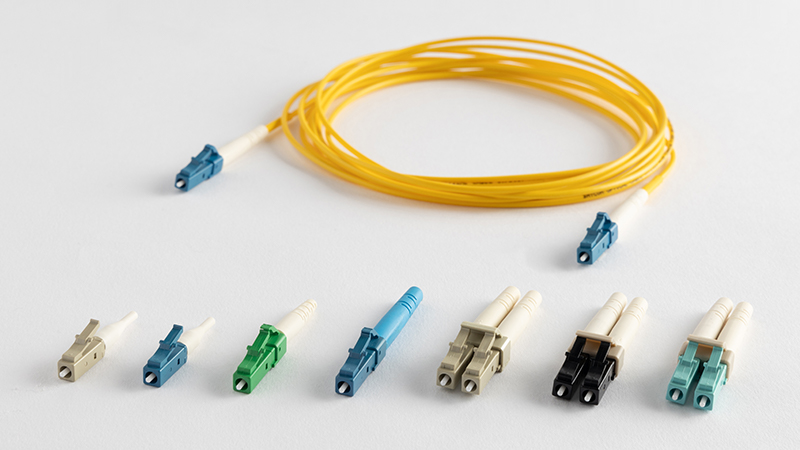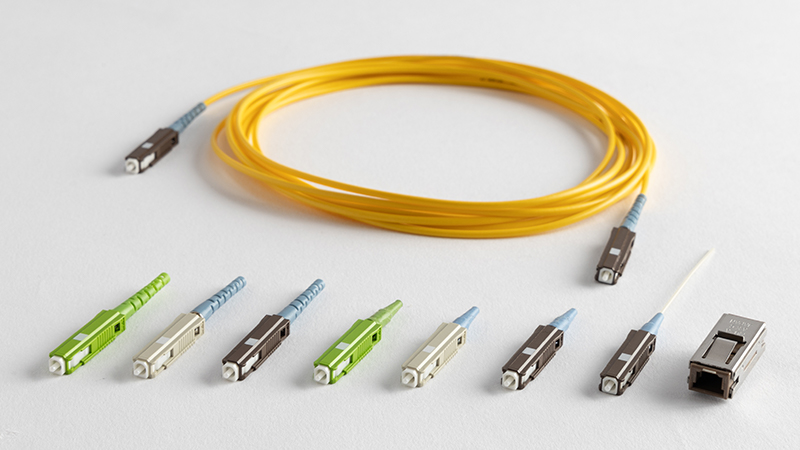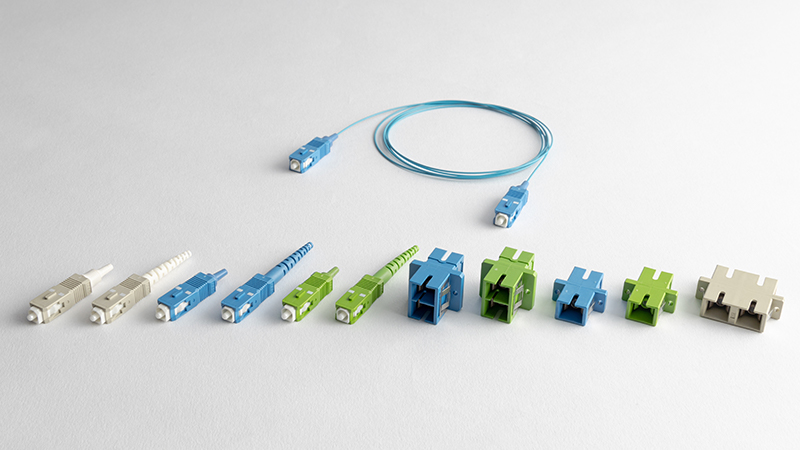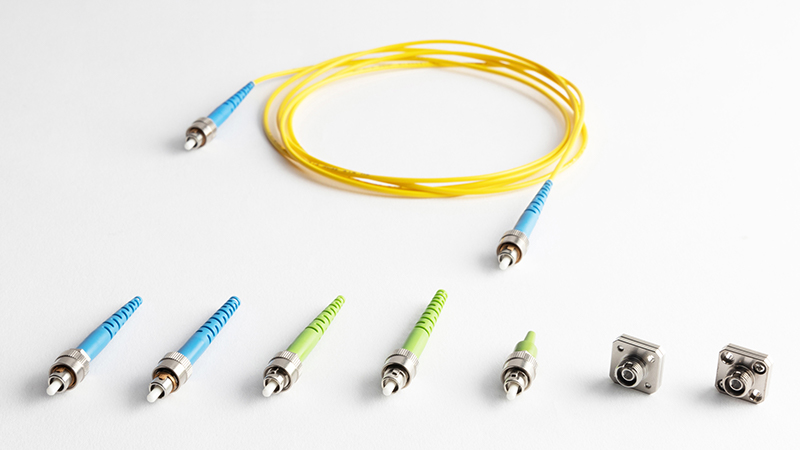Fiber Optic Connectors/ Adapters




General Details
Fiber Optic Connectors and Adapters are critical components in fiber optic communication systems. They are used to join optical fibers where a connect/disconnect capability is required. These components ensure precise alignment and efficient light transmission between fibers.
Adapters
Function
Adapters (or couplers) are used to connect two fiber optic connectors.
Types
Available in simplex, duplex, and multi-fiber configurations.
Compatibility
Adapters are designed to match specific connector types (e.g., LC-LC, SC-SC, or hybrid adapters like LC-SC).
Key Features
Precision Alignment: Ensures minimal signal loss (insertion loss) and back reflection.
Durability: Designed to withstand environmental factors like dust, moisture, and temperature variations.
Interchangeability: Compatible with various fiber types (single-mode, multimode) and cable configurations.
Types: Common connector types include SC, LC, ST, FC, and MTP/MPO.
About Fiber Optic Connectors/Adapters
Fiber optic connectors and adapters are essential for creating reliable and efficient optical links. They play a vital role in ensuring the performance and scalability of modern communication networks. With the increasing demand for high-speed internet and data transfer, these components are continuously evolving to support higher bandwidths and denser configurations.
Common Connector Types
SC (Subscriber Connector):
Square-shaped, push-pull design, widely used in data communication.
LC (Lucent Connector):
Small form factor, popular in high-density applications.
ST (Straight Tip):
Bayonet-style coupling, often used in networking environments.
FC (Ferrule Connector):
Screw-on design, commonly used in high-vibration environments.
MTP/MPO (Multi-Fiber Push-On/Pull-Off):
Used for high-density multi-fiber applications, such as data centers.
Applications of Fiber Optic Connectors/Adapters
Telecommunications
- Used in networks for high-speed data transmission.
- Essential for FTTH (Fiber to the Home) and FTTx (Fiber to the X) deployments.
Data Centers
- High-density connectors like LC and MTP/MPO are used for efficient cable management.
- Enable high-speed connections between servers, switches, and storage devices.
Broadcasting
- Used in video and audio signal transmission for high bandwidth and low latency.
Medical Equipment
- Fiber optics are used in endoscopes and imaging systems, requiring reliable connectors.
Military and Aerospace
- Ruggedized connectors are used for secure and reliable communication in harsh environments.
Industrial Applications
- Used in automation, sensing, and control systems where high-speed data transfer is critical.
Key Considerations
Insertion Loss: The amount of signal loss when light passes through the connector.
Return Loss: The amount of light reflected back toward the source.
Durability: Connectors must withstand repeated mating and unmating cycles.
Environmental Resistance: Must perform reliably under varying temperatures, humidity, and mechanical stress.
Trends
Miniaturization: Smaller connectors like LC and MTP/MPO are becoming more popular for high-density applications.
High-Performance Standards: Connectors are being designed to support emerging technologies like 5G, IoT, and cloud computing.
Automated Assembly: Advances in manufacturing are improving precision and reducing costs.
